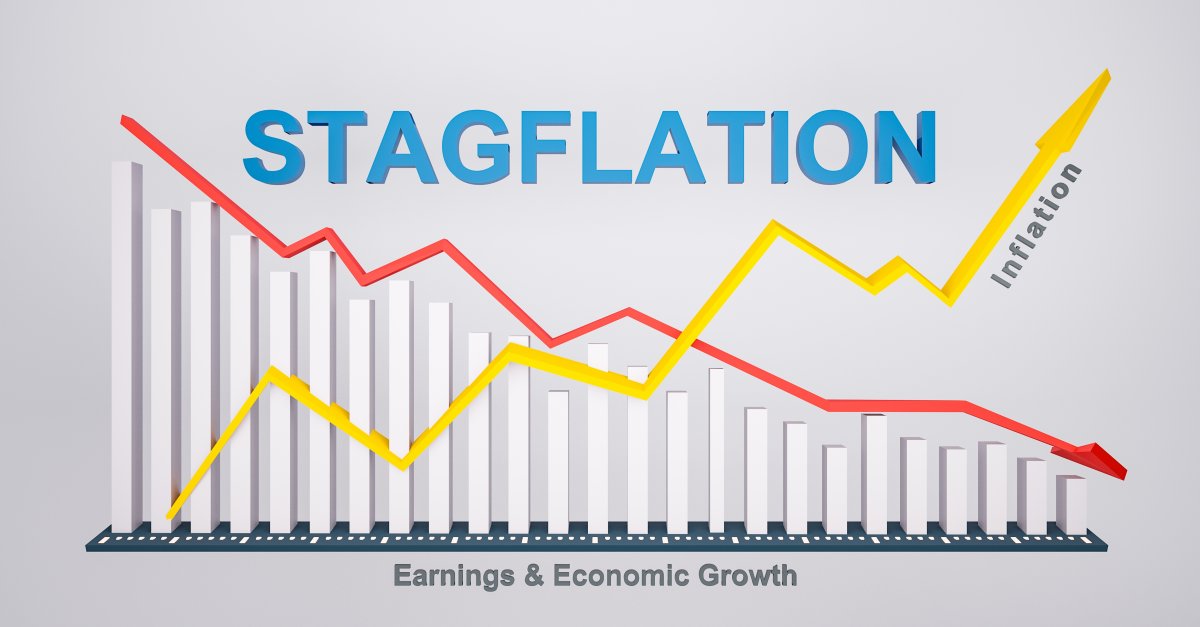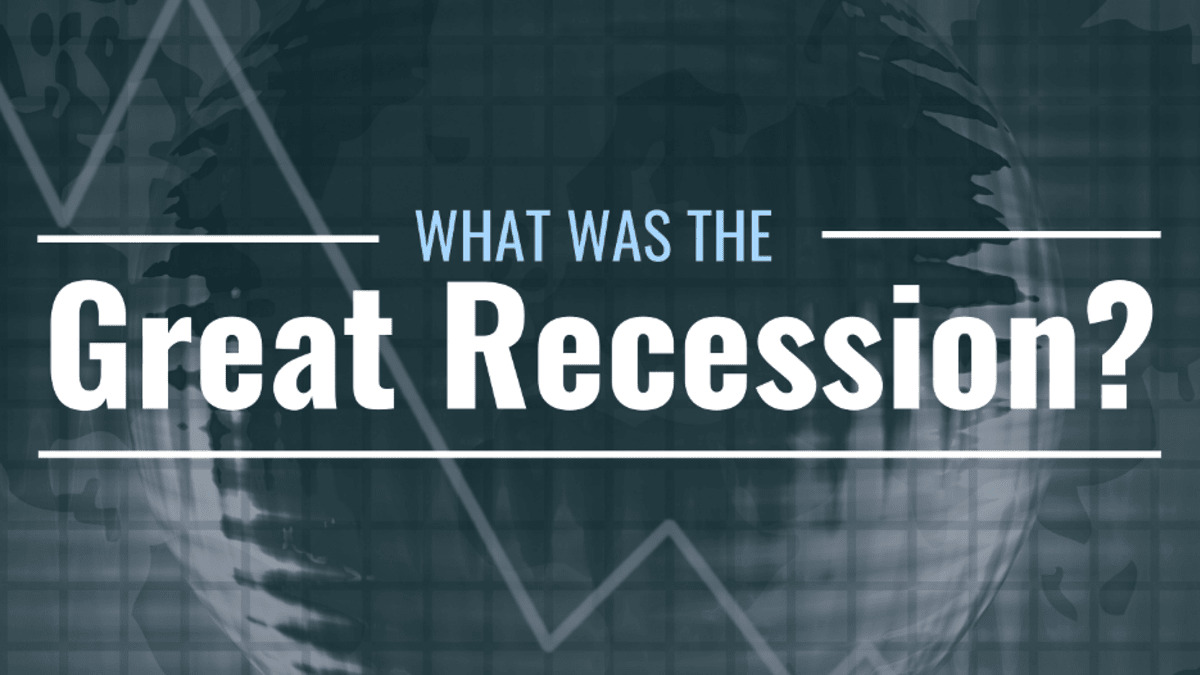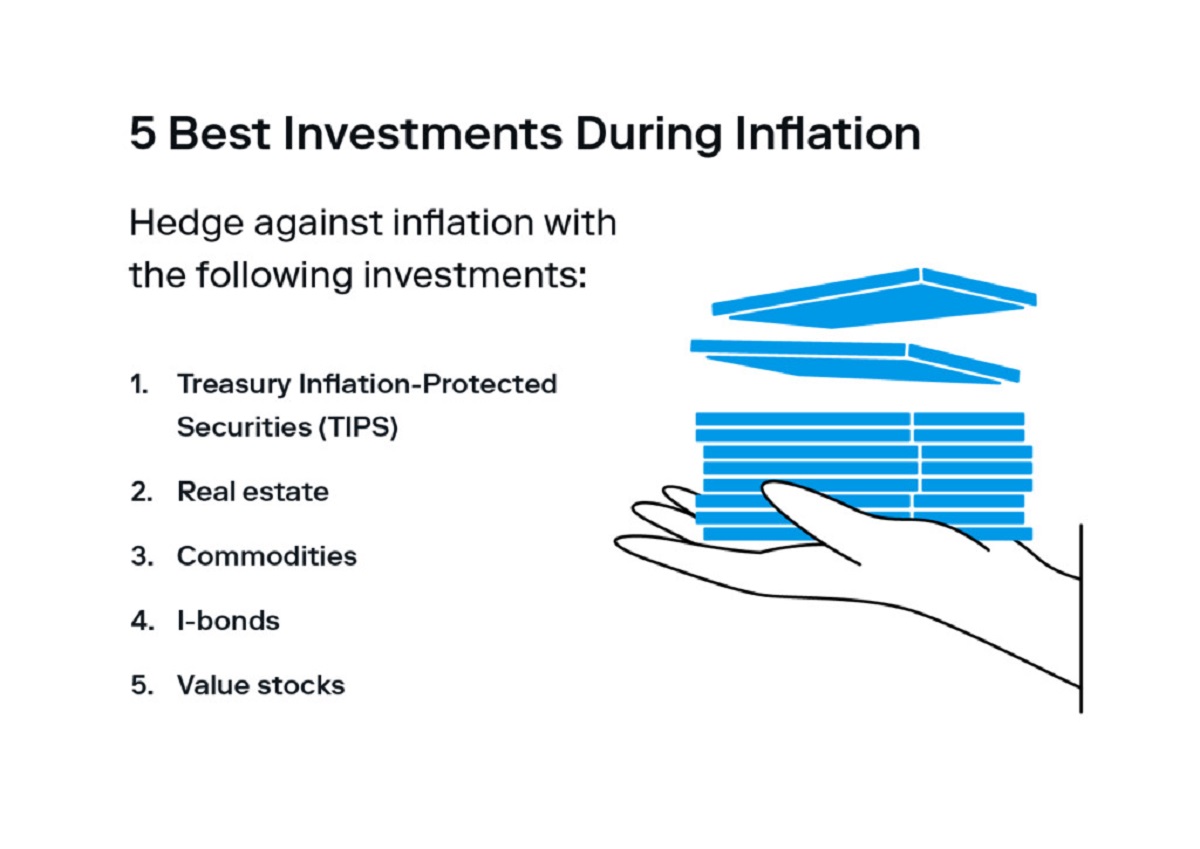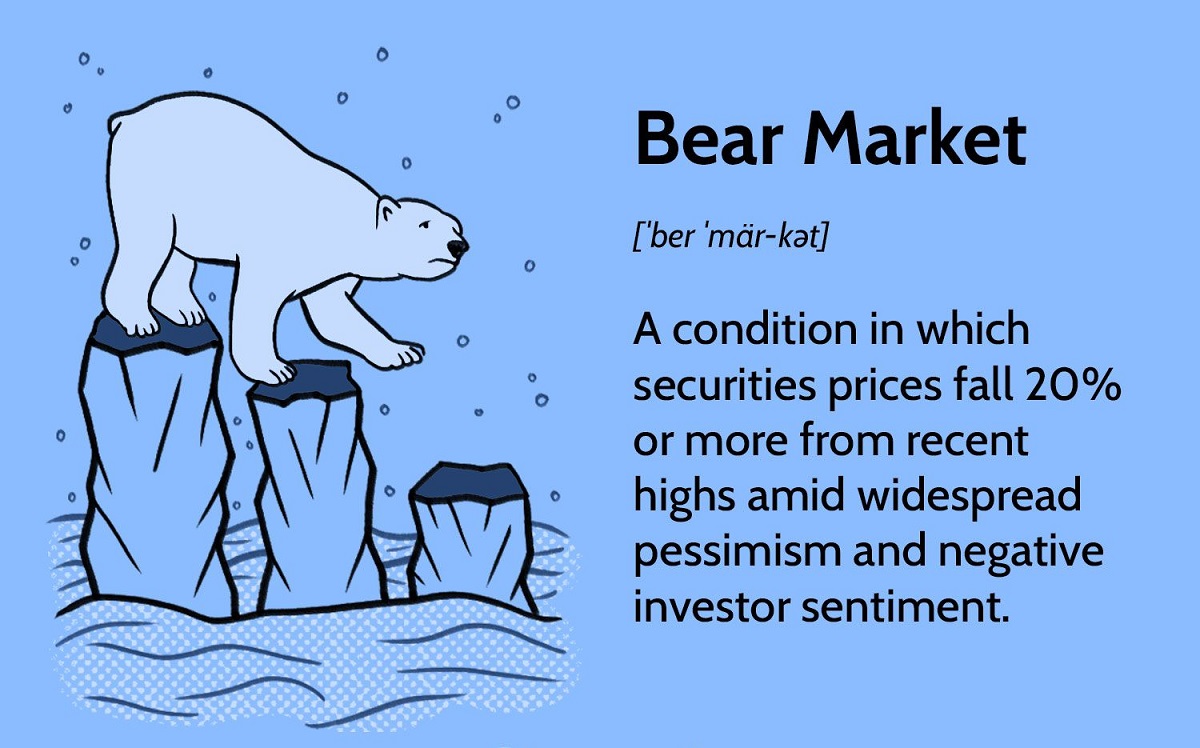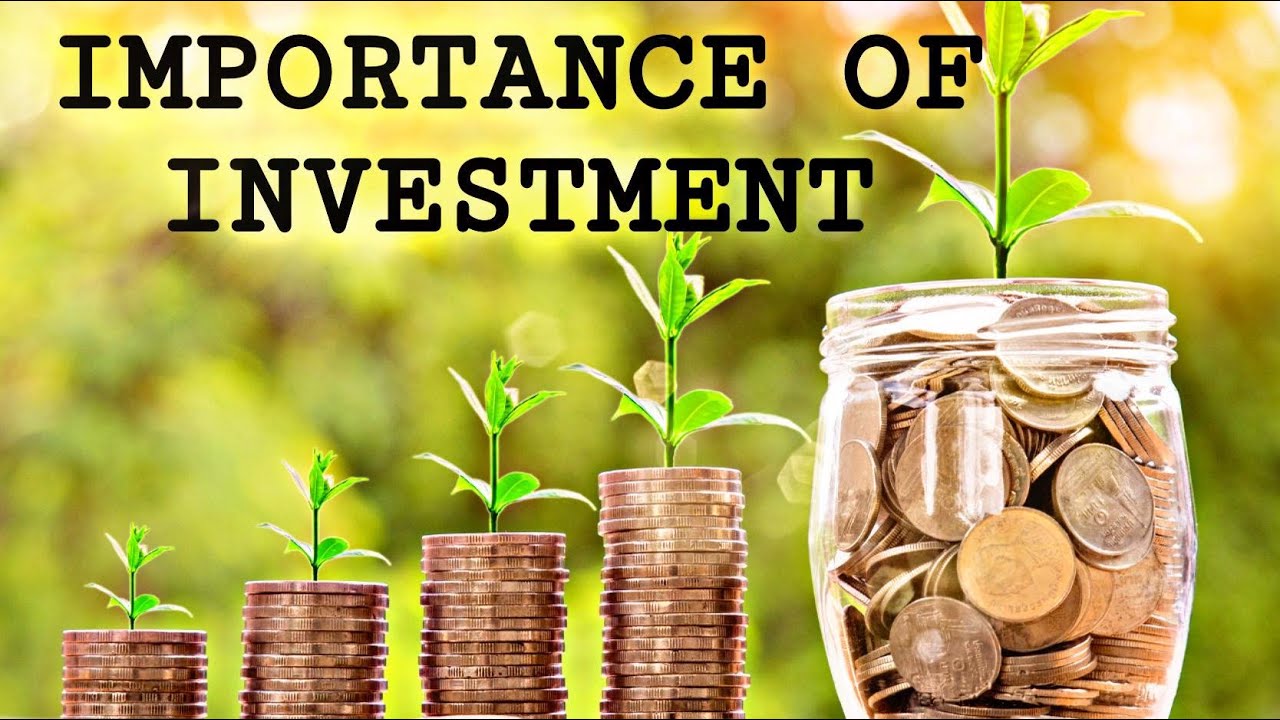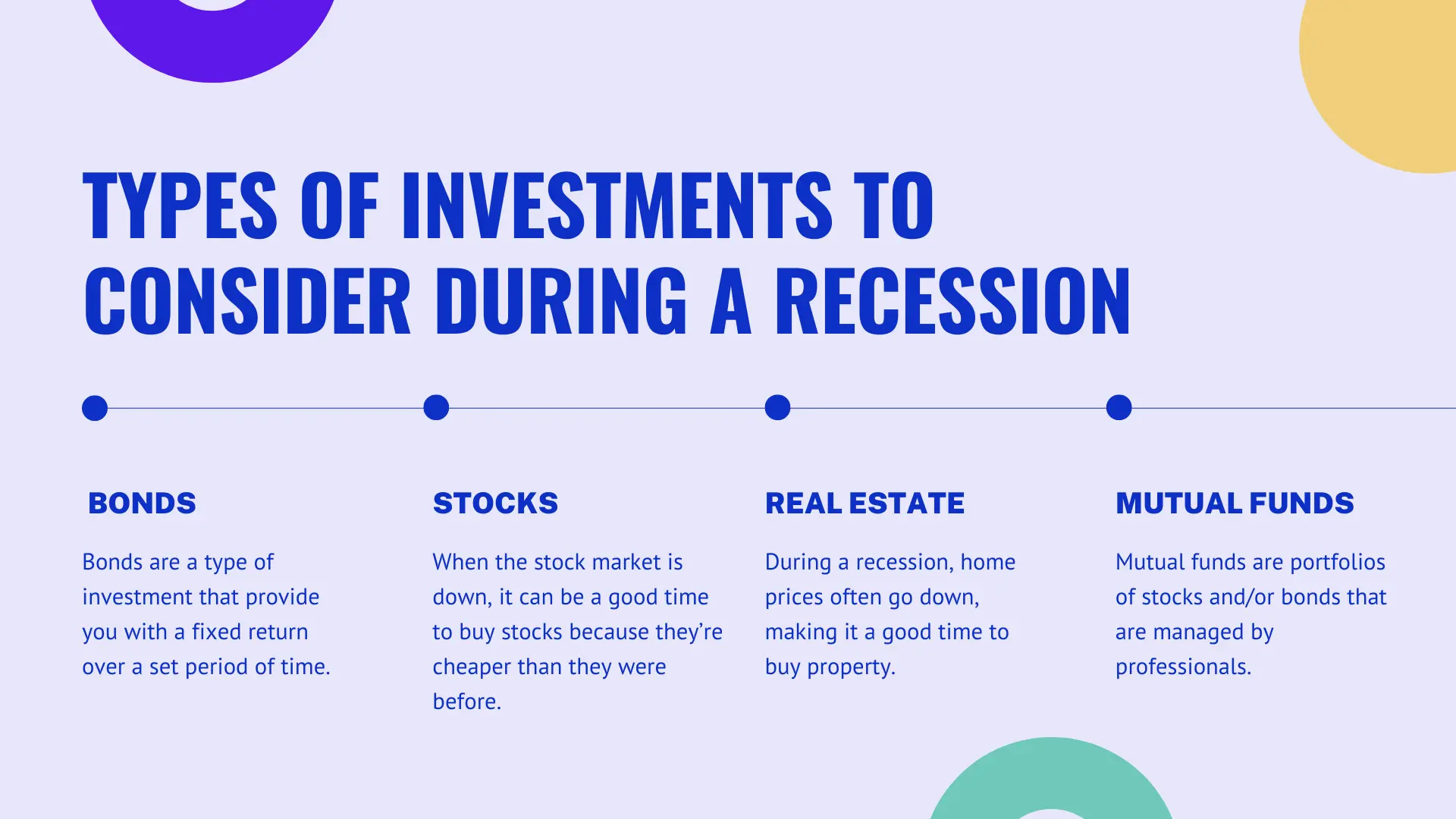Introduction
Stagflation is a unique and challenging economic phenomenon that occurs when a country experiences a combination of stagnant economic growth, high inflation, and high unemployment. This term, coined in the 1970s during a period of economic turmoil, represents a scenario that defies conventional economic thinking. Typically, inflation and unemployment have an inverse relationship where one rises as the other falls, but stagflation breaks this pattern by presenting both high inflation and high unemployment simultaneously.
Understanding stagflation is essential for investors as it can have a significant impact on the performance of their investments. During periods of stagflation, traditional investment strategies may not be as effective, and finding assets that can withstand or even benefit from these adverse conditions becomes crucial.
In this article, we will delve into the concept of stagflation, explore its characteristics, and discuss the investments that tend to perform well during these challenging times. By understanding the unique dynamics of stagflation and identifying suitable investment options, investors can potentially protect their portfolios and even generate returns when faced with this economic scenario.
It is important to note that while historical evidence can guide investment decisions during stagflation, there are no guarantees. Economic conditions can vary, and individual circumstances must be taken into account when making investment choices.
What is Stagflation?
Stagflation is an economic condition characterized by a stagnant or sluggish economy, high inflation rates, and elevated levels of unemployment. This term emerged in the 1970s when many economies experienced a puzzling combination of low growth and rising prices. It was a deviation from the traditional understanding that inflation and unemployment were inversely related.
To understand stagflation, it’s important to grasp the usual relationship between inflation and unemployment. In a healthy economy, when unemployment rates are low, inflation tends to rise as people have more disposable income and spend more. Conversely, when unemployment is high, individuals have less disposable income, leading to decreased demand and lower inflation. However, in stagflation, both inflation and unemployment are simultaneously high.
Stagflation is a complex phenomenon that can be caused by various factors. One common trigger is a supply shock, such as a sudden increase in oil prices or a disruption in the availability of key resources. When the cost of production rises, businesses pass on those expenses to consumers in the form of higher prices, leading to inflation. At the same time, companies may reduce their workforce to cut costs, resulting in higher unemployment levels.
Another contributor to stagflation can be poor monetary or fiscal policy decisions. If a government excessively prints money or incurs excessive debt, it can lead to inflation. Additionally, a lack of investment in productive sectors of the economy may hinder growth and contribute to unemployment.
Stagflation presents a challenging economic environment. Traditional economic measures like lowering interest rates or implementing expansionary fiscal policies may have limited effectiveness, as stimulating demand can potentially exacerbate inflation. This makes it crucial for investors and policymakers to understand and adapt to this unique economic condition.
The effects of stagflation can be wide-ranging and impact various aspects of an economy. Businesses may struggle to grow, as both the cost of production and wages rise. Consumers may face reduced purchasing power due to high prices and unemployment, leading to a decline in overall spending. Governments may encounter challenges in managing inflation, unemployment, and fiscal deficits simultaneously.
In the next section, we will explore the dynamics of stagflation and its consequences in more detail. Understanding the implications of this economic condition will help us identify investment strategies that can potentially thrive even in a stagflating environment.
Understanding Stagflation
Stagflation is a complex economic phenomenon that challenges traditional economic theory. To effectively navigate through stagflation, it is important to understand its key characteristics and implications.
First and foremost, stagflation is characterized by stagnant economic growth. This means that the overall output of goods and services in the economy experiences little to no growth, leading to a slowdown in economic activity. In a healthy economy, growth is typically desirable as it signifies increased employment opportunities, higher wages, and greater prosperity. However, in a stagflationary environment, this growth is subdued or nonexistent.
High inflation is another defining feature of stagflation. Inflation erodes the purchasing power of money and leads to a rise in prices for goods and services over time. While a moderate level of inflation can be considered healthy for an economy, stagflation is marked by persistently high inflation rates. This can be particularly detrimental to consumers, as their income may not keep pace with rising prices, resulting in a decrease in their standard of living.
Unemployment is a critical factor in stagflation as well. While high inflation rates typically coincide with low unemployment rates in a healthy economy, stagflation presents the unique scenario of both inflation and unemployment being high simultaneously. This creates an environment of economic stagnation and hardship for individuals and businesses alike.
Stagflation can have severe consequences for the overall economy. It can lead to reduced business investments, lower consumer spending, and weakened economic confidence. The combination of stagnant growth, high inflation, and unemployment puts a strain on individuals, households, and businesses, making it challenging to plan for the future and make sound financial decisions.
It is also worth noting that stagflation can vary in intensity and duration. Some episodes may last for a few months, while others can persist for several years. The causes of stagflation can differ as well, depending on factors such as geopolitical events, energy prices, government policies, and global economic conditions.
Understanding stagflation is crucial for investors as it requires a different approach to traditional economic conditions. Instead of relying solely on conventional investment strategies, investors must consider alternative assets or sectors that can potentially perform well in a stagflationary environment.
In the next section, we will explore the impact of stagflation on investments and discuss the types of investments that tend to fare better during these challenging times.
Impact of Stagflation on Investments
Stagflation can have a significant impact on various investment types and asset classes. The unique combination of stagnant economic growth, high inflation, and elevated unemployment poses challenges for investors seeking to preserve and grow their wealth.
One of the primary concerns during stagflation is the erosion of purchasing power due to high inflation rates. Inflation erodes the value of cash holdings, making it essential for investors to consider assets that can potentially provide a hedge against inflation. Traditional fixed-income investments like bonds may struggle to keep pace with rising prices, as the interest rates they offer may not match the inflation rate. This can lead to a decrease in the real return on investment.
Equity investments also face challenges during stagflation. Companies may struggle to grow their earnings and revenues in a sluggish economy, which can impact stock prices. Additionally, rising production costs due to inflation can eat into profit margins, causing further disruptions to stock performance.
Real estate investments, on the other hand, have the potential to withstand or even benefit from stagflation. Real estate assets, such as rental properties or commercial buildings, can provide a steady stream of income through rental payments, which may be less affected by economic downturns. Furthermore, real estate values often have the potential to appreciate over time, acting as a store of value against inflation.
Commodity investments, including precious metals like gold and silver, are often seen as safe-haven assets during times of economic uncertainty. These tangible assets have historically performed well during periods of high inflation as they act as a hedge against currency depreciation. Investors seeking to protect their wealth during stagflation may consider diversifying their portfolios with a portion allocated to precious metals.
Energy stocks and commodities may also see increased demand during stagflation. Rising energy prices, coupled with disruptions in supply, can provide investment opportunities in the energy sector. Additionally, investments in renewable energy sources may gain traction as governments and businesses seek alternative energy solutions amidst rising oil prices.
Consumer staples, which include non-discretionary items like food, beverages, and household products, tend to be more resilient during economic downturns. Demand for these essential goods remains relatively stable, even in a stagflationary environment, making consumer staples an attractive investment option for those looking for stability.
Treasury Inflation-Protected Securities (TIPS) are government-issued bonds specifically designed to protect against inflation. These bonds are indexed to inflation and provide investors with a fixed interest rate in addition to adjustments for changes in the consumer price index. TIPS can be an effective way to safeguard investments against the erosive effects of inflation during stagflation.
Investors may also consider alternative assets like cryptocurrencies during stagflation. Cryptocurrencies, such as Bitcoin, have gained attention as potential inflation hedges. While highly volatile, cryptocurrencies offer the possibility of decentralized value storage and may provide a diversification benefit to traditional investment portfolios.
It’s important to note that the performance of investments during stagflation is not guaranteed, and individual circumstances and risk tolerance should be considered when making investment decisions. Diversification across different asset classes and careful research are key to navigating the challenges posed by stagflation.
In the following sections, we will discuss specific investments that tend to perform well during stagflation and explore their characteristics and benefits.
Investments That Perform Well During Stagflation
Stagflation presents unique challenges for investors, but there are certain investments that have historically performed well during periods of stagnant economic growth, high inflation, and elevated unemployment. By diversifying their portfolios and considering these investments, investors can potentially mitigate the negative effects of stagflation and even generate positive returns. Let’s explore some of these investment options:
1. Inflation-Indexed Bonds: Inflation-protected bonds, such as Treasury Inflation-Protected Securities (TIPS), are specifically designed to keep up with inflation. These bonds adjust their principal value as inflation fluctuates, providing investors with a hedge against rising prices and preserving purchasing power.
2. Precious Metals: Precious metals, particularly gold and silver, have historically been considered safe-haven assets during times of economic uncertainty. They act as a hedge against currency depreciation and inflation, making them attractive investments when the purchasing power of traditional currencies is eroded.
3. Real Estate: Real estate investments, including rental properties and commercial buildings, can provide stable income streams and potential appreciation during stagflation. Real estate values often hold up well during times of economic stagnation, and rental income can be less affected by economic downturns.
4. Commodities: Commodities like oil, natural gas, and agricultural products have finite supply and high demand. During stagflation, when inflation rates rise, the prices of commodities tend to increase as well. Investing in commodities can provide a hedge against inflation and potentially generate attractive returns.
5. Energy Stocks: As energy prices tend to rise during stagflation, investments in energy companies can perform well. Both traditional energy sources and renewable energy solutions may gain traction, providing investment opportunities as governments and businesses seek alternative energy options.
6. Consumer Staples: Non-discretionary consumer goods, such as food, beverages, and household products, typically experience stable demand, even in a stagnant economy. Investments in consumer staples can offer stability during stagflation as people continue to purchase essential items regardless of economic conditions.
7. High-Yield Bonds: High-yield bonds, also known as junk bonds, are issued by companies with lower credit ratings. While they carry higher risk, they also offer higher yields compared to investment-grade bonds. High-yield bonds may perform well during stagflation as companies seek to borrow at higher rates to support their operations.
8. Cryptocurrencies: Cryptocurrencies, such as Bitcoin and Ethereum, have gained attention as potential hedges against inflation. While highly volatile, cryptocurrencies offer the possibility of decentralized value storage and diversification benefits in traditional investment portfolios.
9. Diversification: Regardless of specific investments, diversification remains a key strategy during stagflation. Spreading investments across different asset classes can help mitigate risk and potentially capture positive returns from various sources.
It’s important to note that the performance of these investments can vary and may be influenced by a range of factors beyond just stagflation. Investors should carefully evaluate their risk tolerance, investment goals, and time horizon before making any investment decisions.
In the next section, we will summarize the key points discussed and conclude our exploration of stagflation and investment strategies.
Inflation-Indexed Bonds
Inflation-Indexed Bonds, such as Treasury Inflation-Protected Securities (TIPS), are fixed-income securities that are specifically designed to protect against inflation. These bonds provide investors with a reliable way to preserve their purchasing power during periods of high inflation, making them a popular choice during stagflation.
The primary benefit of inflation-indexed bonds is their ability to adjust the principal value in line with changes in inflation rates. As inflation rises, the principal value of these bonds increases, keeping pace with the eroding value of money. In addition to the adjusted principal value, inflation-indexed bonds also pay periodic interest based on the adjusted principal, providing investors with a predictable income stream.
Investing in inflation-indexed bonds can provide several advantages during stagflation. First and foremost, they act as a hedge against rising prices. While traditional bonds may see their real returns diminished by inflation, inflation-indexed bonds mitigate this risk by adjusting both the principal and interest payments to track inflation.
Furthermore, inflation-indexed bonds are backed by the government, offering a high level of credit quality. This reduces the risk associated with default, making them a relatively secure investment option. Government backing also ensures liquidity, allowing investors to buy and sell these bonds with relative ease.
When investing in inflation-indexed bonds, it is important to consider a few factors. The explicit connection to inflation means that the interest payments on these bonds may be lower compared to traditional fixed-income securities. Additionally, the adjusted principal value may not be fully realized until the bond reaches maturity.
Investors can gain exposure to inflation-indexed bonds through mutual funds, exchange-traded funds (ETFs), or by purchasing individual bonds directly from the government. These bonds are available in various maturities, allowing investors to tailor their investment durations to align with their specific needs and goals.
While inflation-indexed bonds offer significant advantages during stagflation, it is important to note that they are not without risks. Changes in inflation expectations, interest rates, or government policies can impact the performance of these bonds. Investors should carefully evaluate their risk tolerance and consider diversifying their bond holdings alongside other investments.
Overall, inflation-indexed bonds can play a valuable role in an investment portfolio during stagflation. Their ability to hedge against inflation and maintain purchasing power makes them an attractive option for investors seeking stability and protection in uncertain economic conditions.
Precious Metals
Precious metals, particularly gold and silver, have long been considered reliable safe-haven investments during times of economic uncertainty, including periods of stagflation. These tangible assets hold intrinsic value and act as a hedge against currency depreciation and inflation, making them an attractive option for investors looking to protect their wealth.
One of the primary benefits of investing in precious metals during stagflation is their ability to preserve purchasing power. As inflation rises and the value of traditional currencies erodes, the value of precious metals often appreciates, providing a store of value. Gold and silver have historically been seen as a reliable means of preserving wealth during times of economic turmoil.
Unlike fiat currencies, which are subject to the policies of central banks and government control, precious metals offer a level of independence from such influences. Their value is derived from factors such as supply and demand dynamics, investor sentiment, and global economic conditions. This independence can provide a sense of stability and security for investors seeking to navigate the uncertainties of stagflation.
Precious metals are also highly liquid, meaning they can be easily bought and sold in various forms, including coins, bars, and Exchange-Traded Funds (ETFs). This liquidity allows investors to easily adjust their holdings in response to market fluctuations and changing investment conditions.
Investing in precious metals can be done through physical ownership or paper instruments. Owning physical gold or silver provides a tangible asset that can be stored and accessed directly. Alternatively, investors can choose to invest in ETFs that track the price of precious metals, delivering exposure to their performance without the need for physical ownership.
It is important to note that investing in precious metals is not without risks. As with any investment, price volatility is a factor to consider. The value of gold and silver can experience significant fluctuations in the short term, driven by factors such as economic conditions, geopolitical events, and investor sentiment. However, over the long term, precious metals have historically provided a hedge against inflation and a means of preserving wealth.
During stagflation, precious metals can offer a tangible and independent store of value. Their ability to preserve purchasing power, liquidity, and historical track record as a safe-haven asset make them an attractive investment option for investors seeking to safeguard their portfolios in the face of economic uncertainty.
Real Estate
Investing in real estate can be a viable strategy during stagflation as it offers several advantages and potential sources of return. Real estate investments, such as rental properties and commercial buildings, have historically demonstrated resilience during economic downturns, making them an attractive option for investors seeking stability and potential growth in a stagflationary environment.
One of the key benefits of investing in real estate during stagflation is the potential for stable income streams. Rental properties can provide a consistent cash flow through rental payments, which tend to be less affected by economic downturns compared to other forms of income. This predictable income can act as a buffer against inflation and provide a source of stability during turbulent times.
Additionally, real estate has the potential for value appreciation over time. While economic growth may be stagnant during stagflation, real estate values have historically demonstrated resilience, often maintaining or increasing their worth. This potential for capital appreciation can further enhance the overall return on investment for real estate investors.
Real estate investments can also act as a hedge against inflation during stagflation. As the general price level rises, rental prices can be adjusted, allowing property owners to maintain the income generated by their properties in line with inflation. This ability to align rental income with rising prices helps to protect the purchasing power of investors in real estate.
Furthermore, real estate investments offer tangible assets that can provide a sense of security and stability. Unlike investments in stocks or bonds, which can experience significant price volatility, real estate is a physical and tangible asset that can provide a sense of control and ownership. This can be particularly appealing to investors looking for stability and tangible value during uncertain economic conditions.
Investing in real estate during stagflation can be done through direct ownership of properties, real estate investment trusts (REITs), or real estate crowdfunding platforms. Each option offers different benefits and considerations, and investors should carefully evaluate their risk tolerance, investment goals, and available resources before choosing the most suitable approach.
It is important to note that real estate investments also come with their own set of risks, including property market volatility, maintenance costs, and potential liquidity challenges. Proper due diligence, market research, and risk management are essential when entering the real estate market.
Overall, investing in real estate can be a favorable strategy during stagflation. The potential for stable income streams, long-term appreciation, inflation hedging, and tangible asset ownership make real estate an attractive option for investors seeking stability and potential growth in an uncertain economic climate.
Commodities
Investing in commodities can be a strategic choice during stagflation as they have the potential to provide a hedge against inflation and generate attractive returns. Commodities are essential goods and resources that are used in various industries, and their prices tend to rise during periods of high inflation. Here are some key points to consider when investing in commodities during stagflation.
Commodities, including oil, natural gas, agricultural products, and metals, can perform well during stagflation due to their limited supply and high demand. As inflation increases, the prices of commodities tend to rise accordingly, providing an opportunity for investors to benefit from the upswing in prices. Investing in commodities allows for diversification away from traditional financial assets such as stocks and bonds, which may struggle in a stagflationary environment.
One advantage of commodities is their tangible nature. Unlike stocks or bonds, which represent ownership in a company or a debt instrument, commodities are physical assets. This tangibility provides investors with a sense of security and value as they are investing in assets that have physical presence and intrinsic worth. Additionally, commodity investments offer a level of independence from the performance of financial markets, which can provide portfolio diversification.
Investors can access commodities through various methods, including futures contracts, commodity-focused exchange-traded funds (ETFs), and even direct investment in companies involved in the production or distribution of commodities. Each method has its own set of risks and considerations, and investors should carefully evaluate their risk tolerance and investment goals before choosing the most suitable approach.
When investing in commodities, it is important to consider supply and demand dynamics, as well as global economic conditions. Factors such as geopolitical events, natural disasters, and changes in government policies can affect commodity prices. Additionally, commodities can be subject to price volatility, and investors should be prepared to withstand short-term fluctuations for potential long-term gains.
During stagflation, commodities that are known for their inflation-hedging properties, such as oil, gold, and agricultural products, often perform well. These commodities are in high demand and limited supply, contributing to their potentially higher prices during inflationary periods. It is important to conduct thorough research and stay informed about market trends and fundamental factors that drive the prices of specific commodities.
While investing in commodities during stagflation can offer significant opportunities, it is essential to exercise caution and diversify your portfolio. Investing solely in commodities can expose your investment to specific commodity price volatility and other risks associated with the commodity market. Diversification across asset classes and careful risk management are key to successful commodity investing.
In summary, commodities have the potential to provide a hedge against inflation and generate attractive returns during stagflation. Investing in commodities can offer diversification, tangibility, and the ability to capture potential gains from rising prices. However, investors should carefully evaluate risks and consider diversification alongside other investments in their portfolio.
Energy Stocks
Investing in energy stocks can be a strategic move during stagflation, as rising energy prices and a potential shift towards alternative energy sources create opportunities for investors. Energy stocks represent companies involved in the production, distribution, and exploration of energy resources, and they can perform well during stagflation due to increased demand and limited supply. Here are some key points to consider when investing in energy stocks during stagflation.
One advantage of investing in energy stocks during stagflation is the potential for rising energy prices. Stagflation often leads to higher inflation, which can result in increased energy costs and higher oil prices. Energy companies, including those involved in oil and gas production, can benefit from this trend, as it can boost their revenues and profitability. Additionally, the potential for energy conservation policies or a shift towards clean energy sources may present opportunities for companies involved in renewable energy solutions.
Investing in energy stocks offers exposure to an essential sector of the economy. Energy is a fundamental component of economic activity, and companies involved in energy production and distribution play a critical role. Regardless of the economic conditions, energy stocks can provide a level of stability due to the consistent demand for energy resources.
Furthermore, energy stocks offer the potential for dividend income. Many energy companies maintain a history of paying regular dividends to shareholders, providing investors with a consistent source of passive income. Dividends can be particularly attractive during stagflation, as they can partially offset the negative effects of inflation and provide a stable income stream.
Investors can access energy stocks through various methods, including purchasing individual stocks, investing in energy-focused exchange-traded funds (ETFs), or through mutual funds specializing in the energy sector. It is important to carefully evaluate the companies and funds in which you choose to invest, considering their financial health, management capabilities, and exposure to different energy sources or market segments.
When investing in energy stocks, it is essential to consider factors such as geopolitical events, energy policies, and technological advancements in the industry. Political instability, changes in government regulations, or advancements in clean energy technologies can significantly impact the performance of energy stocks. Staying informed about these developments and conducting thorough research are critical for successful energy stock investing.
While investing in energy stocks during stagflation can present significant opportunities, it is important to exercise caution and diversify your portfolio. Energy stocks can be subject to price volatility, and it is wise to spread risk across different stocks or sectors to mitigate the impact of any individual stock’s performance.
In summary, investing in energy stocks during stagflation can offer potential gains due to rising energy prices and the shift towards alternative energy sources. Energy stocks provide exposure to an essential sector of the economy and the potential for dividend income. However, investors should carefully evaluate risks, conduct thorough research, and consider diversification alongside other investments in their portfolio.
Consumer Staples
Investing in consumer staples can be a prudent strategy during stagflation as these products tend to have consistent demand regardless of economic conditions. Consumer staples refer to essential goods and services that people rely on for their daily needs, such as food, beverages, household products, and personal care items. Here are some key points to consider when investing in consumer staples during stagflation.
One advantage of investing in consumer staples during stagflation is the stability of demand. These products are considered non-discretionary, meaning that consumers continue to purchase them regardless of changes in their financial situation. During stagflation, when economic growth is stagnant and inflation is high, people tend to prioritize spending on essential goods, leading to sustained demand for consumer staples.
Consumer staples companies typically exhibit consistent earnings and stable cash flows. Even in a sluggish economy, companies that produce and distribute consumer staples products tend to generate reliable revenues. This stability can provide investors with a sense of security and potentially enhance portfolio stability during periods of economic uncertainty like stagflation.
Another advantage of investing in consumer staples is the potential for dividend income. Many consumer staples companies have a track record of paying dividends to shareholders. These dividends can provide a steady stream of income and act as a buffer against the erosion of purchasing power caused by inflation. Dividend payments can contribute to overall portfolio returns and provide investors with a potentially more predictable income stream.
Investors can access consumer staples through various methods, such as investing in individual stocks of consumer staples companies, purchasing exchange-traded funds (ETFs) that focus on the consumer staples sector, or including consumer staples mutual funds in their investment portfolio. Each approach comes with its own risk profile and considerations, and investors should carefully evaluate the options available based on their investment goals and risk tolerance.
When investing in consumer staples, it is important to consider factors such as brand strength and market positioning. Companies with well-established brands and a strong competitive advantage tend to fare well in the consumer staples sector. Additionally, evaluating the financial health and growth potential of consumer staples companies is crucial for identifying investment opportunities in this sector.
While investing in consumer staples during stagflation provides stability and potential income, it is important to diversify the investment portfolio. Diversification across different sectors and asset classes can help spread risk and allow investors to capture potential gains from various sources. Allocating a portion of the portfolio to consumer staples can provide stability and potential growth while mitigating the risks associated with investing solely in one sector.
In summary, investing in consumer staples during stagflation can offer stability and potential income due to the consistent demand for essential products. Consumer staples companies typically exhibit stable earnings and may provide dividend payments. However, as with any investment, it is important to carefully evaluate risks, conduct thorough research, and consider diversification within the investment portfolio.
Treasury Inflation-Protected Securities (TIPS)
Treasury Inflation-Protected Securities (TIPS) are government-backed bonds specifically designed to provide protection against inflation. These securities offer a unique investment option for investors seeking to hedge against rising prices during stagflation. Here are some key points to consider when investing in TIPS.
One of the main benefits of investing in TIPS during stagflation is their ability to preserve purchasing power. Unlike traditional bonds, the principal value of TIPS is adjusted based on changes in inflation, ensuring that investors maintain the real value of their investment. This adjustment is made through the Consumer Price Index (CPI), a measure of inflation, allowing TIPS to keep up with rising prices.
TIPS pay interest at a fixed rate, but the interest payments also adjust with changes in inflation. This feature ensures that investors receive a real rate of return, protecting them from the erosive effects of inflation. As inflation rises, the interest payments of TIPS increase, providing investors with an additional income stream that reflects the rising cost of living during stagflation.
Investing in TIPS offers a high level of credit quality as they are backed by the U.S. government. This makes TIPS a relatively low-risk investment compared to other fixed-income options. In uncertain economic conditions like stagflation, the government backing provides investors with confidence in receiving interest payments and principal repayment upon maturity.
TIPS can be purchased directly from the U.S. Treasury through auctions or on the secondary market. Additionally, investors can gain exposure to TIPS through mutual funds or exchange-traded funds (ETFs) that specialize in inflation-protected securities. These investment vehicles provide diversification and ease of access to TIPS, making them attractive options for investors.
When investing in TIPS, it is important to consider the potential impact of interest rates on bond prices. As interest rates rise, bond prices tend to fall, which can have an inverse effect on TIPS. Since TIPS have a fixed rate of interest, their prices may fluctuate in response to changes in market interest rates. Investors should evaluate their risk tolerance and investment goals, considering the potential impact of interest rates on TIPS investments.
TIPS can play a valuable role in a well-diversified investment portfolio during stagflation. They provide a reliable means of preserving purchasing power and earning a real rate of return. However, it is important to note that TIPS may not be appropriate for all investors and that individual circumstances and risk preferences should be taken into account.
In summary, investing in Treasury Inflation-Protected Securities (TIPS) during stagflation can offer protection against rising prices and help maintain the real value of investment. TIPS provide a unique opportunity to earn a real rate of return and mitigate the erosive effects of inflation. However, investors should carefully evaluate risks, consider their risk tolerance and investment goals, and diversify their portfolios accordingly.
Cryptocurrencies
Cryptocurrencies have gained significant attention as potential investments during stagflation due to their decentralized nature and the potential they hold for acting as a hedge against inflation. While highly volatile and speculative, cryptocurrencies offer a unique investment option for those seeking alternatives to traditional financial assets. Here are some key points to consider when investing in cryptocurrencies during stagflation.
One of the primary advantages of cryptocurrencies during stagflation is their potential as a hedge against inflation. Cryptocurrencies, such as Bitcoin and Ethereum, operate on decentralized blockchain technology, making them resistant to government control and inflationary pressures. Unlike fiat currencies, which can be influenced by central banks and subject to inflationary policies, cryptocurrencies are limited in supply and designed to retain their value over time.
Cryptocurrencies offer the potential for diversification in an investment portfolio during stagflation. By adding cryptocurrencies to a well-diversified portfolio, investors can benefit from the potential growth and returns that digital assets offer. Cryptocurrencies are not strongly correlated with traditional financial markets, which can provide a level of insulation from the challenges posed by stagnant economic growth and high inflation.
Investing in cryptocurrencies requires careful consideration and research. Cryptocurrency markets are highly volatile and subject to significant price fluctuations. It is essential to assess the underlying technology, development team, and network security when selecting which cryptocurrencies to invest in. Additionally, investors should be prepared to withstand short-term price volatility and have a long-term investment horizon as cryptocurrencies tend to be more suitable for those with a higher risk tolerance.
Investors can access cryptocurrencies through various exchanges, allowing them to purchase and trade digital assets. It is crucial to select reputable and secure platforms that prioritize user safety and offer a range of cryptocurrencies to choose from. In addition, investors can opt for custodial or non-custodial wallets to securely store their digital assets.
Regulatory considerations should also be taken into account when investing in cryptocurrencies. Different jurisdictions have varying regulations regarding the buying, selling, and holding of digital assets. Staying informed about regulatory changes and adhering to legal obligations is important to ensure compliance and protect investments.
It is worth noting that cryptocurrencies may not be suitable for all investors, and caution should be exercised. The high volatility and speculative nature of cryptocurrencies pose risks, and investors should only invest amounts they are willing to lose. Diversification across different asset classes and careful risk management are crucial when considering adding cryptocurrencies to an investment portfolio.
In summary, cryptocurrencies can be an alternative investment option during stagflation, offering the potential for hedging against inflation and diversification. Due to their volatile nature, thorough research and risk management are essential. Cryptocurrencies should be approached with caution, and investors should be prepared to withstand price volatility and consider their risk tolerance and investment goals.
High-Yield Bonds
High-yield bonds, also known as junk bonds, can be an attractive investment option during stagflation. These bonds are issued by companies with lower credit ratings, and they offer higher yields compared to investment-grade bonds. While they come with increased risk, high-yield bonds can provide opportunities for higher returns in a stagnant economic environment. Here are key points to consider when investing in high-yield bonds during stagflation.
One advantage of high-yield bonds during stagflation is their potential for higher yields compared to other fixed-income options. The lower credit ratings associated with these bonds reflect the higher risk of default, which translates into higher interest rates. This higher yield can be especially beneficial in stagnant economic periods when traditional fixed-income investments may offer lower returns.
High-yield bonds often feature more flexibility in terms of issuer type and industry exposure compared to investment-grade bonds. This flexibility can provide investors with opportunities to diversify their fixed-income portfolio and potentially benefit from sectors that may perform well despite the broader economic challenges. However, it is crucial to conduct thorough research on individual issuers to assess their creditworthiness and evaluate the associated risks.
Due diligence plays a critical role when investing in high-yield bonds. Researching the financial health and creditworthiness of the issuer is crucial, as these bonds have a higher risk of default compared to investment-grade bonds. Understanding the issuer’s business model, industry conditions, and cash flow projections is important for determining the likelihood of interest and principal payments.
Investing in high-yield bonds requires careful risk management. While the higher yield potential can be attractive, investors should be aware of the increased credit risk associated with these bonds. Diversification within the high-yield bond market and careful selection of issuers can help mitigate these risks and enhance the overall risk-return profile of the investment portfolio.
Investors can gain exposure to high-yield bonds through mutual funds, exchange-traded funds (ETFs), or individual bond purchases. Professional management, such as that offered by mutual funds or ETFs, provides diversification and expertise in selecting and managing a portfolio of high-yield bonds. Alternatively, investors can examine individual bonds and construct their own portfolios based on their risk tolerance and investment goals.
High-yield bonds should be considered within the larger context of an investor’s portfolio. While they can offer attractive yields, it is important to maintain a balanced portfolio and consider diversification across various asset classes. Careful allocation based on risk tolerance, investment goals, and other investment holdings is essential to ensure a well-constructed and resilient investment portfolio.
In summary, high-yield bonds can offer higher yields and potential returns during stagflation. However, they come with increased credit risk and require careful due diligence and risk management. Diversification, research, and understanding individual issuers’ financial health are crucial when investing in the high-yield bond market as part of a well-diversified investment portfolio.
Conclusion
Stagflation presents unique challenges for investors, but it also offers opportunities to explore alternative investment strategies that can potentially protect and grow wealth during these difficult economic conditions.
Understanding stagflation is crucial for investors as it deviates from the traditional economic relationship between inflation and unemployment. Stagflation is characterized by stagnant economic growth, high inflation, and elevated levels of unemployment. This combination creates a complex and uncertain economic environment.
During stagflation, traditional investment strategies may not be as effective, and it becomes crucial to consider alternative assets that have historically performed well. Investments such as inflation-indexed bonds, precious metals, real estate, commodities, energy stocks, consumer staples, Treasury Inflation-Protected Securities (TIPS), cryptocurrencies, and high-yield bonds can provide potential protection and growth opportunities during stagflation.
Inflation-indexed bonds, precious metals, and real estate offer potential inflation hedging benefits and the preservation of purchasing power. Commodities and energy stocks tend to benefit from rising prices during stagflation. Consumer staples provide stability and consistent demand regardless of economic conditions. TIPS offer protection against inflation and the maintenance of real returns. Cryptocurrencies can act as a potential hedge against inflation and diversification opportunity. High-yield bonds offer the potential for higher yields while considering increased credit risk.
It is important for investors to carefully assess their risk tolerance, investment goals, and time horizon when considering investments during stagflation. Each investment option carries its own risks and benefits, and thorough research is crucial to make informed decisions. Diversification across asset classes and careful risk management remain important strategies to mitigate the risks associated with stagflation and investing in these alternative assets.
While historical performance can guide investment decisions, it is important to note that economic conditions can vary, and there are no guarantees of future results. Investors should stay informed, continuously evaluate their investments, and make adjustments when necessary to navigate the challenges and opportunities of stagflation.







